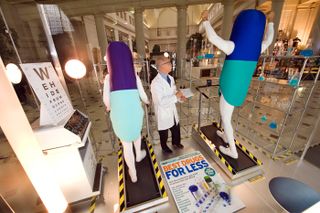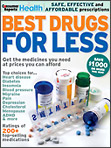
President Obama will now be looking to choose an Under Secretary of Commerce and PTO Director. Secretary Locke’s responses to questions from Senator Sam Brownback (R-Kansas) on patent reform at his confirmation hearing may shed some light on what we can expect. The Commerce secretary nominee emphasized that patent laws should not benefit some industries over others and that their impact on jobs should be considered when evaluating new laws:
SEN. BROWNBACK: There has been legislation proposed in Congress over the past few years to change the patent laws, and it has become very contentious. The proponents are a group of high tech and financial services companies, and on the other side there is a larger group of companies from a variety of industries manufacturing, green tech, nanotech, biotech, pharmaceuticals, venture capitals. … Do you agree that we should not be changing our patent laws in a way that chooses one group of companies over another? If you are confirmed, do you feel you can consider this issue impartially and help guide the debate to a place where not choosing high tech over manufacturing, for example?
LOCKE: If confirmed, I would work with Congress on patent reform legislation that would enhance innovation by fairly balancing the interests of innovators across all industries and technologies. I agree that patent law reform should not favor one industry or any particular area of technology over another.
SEN. BROWNBACK: Many high-tech companies that oppose S. 515, the Patent Reform Act of 2009, rely on their ability to protect their patented innovations by receiving damage awards from proven patent infringers. The proposed legislation changes the way damages are calculated, making infringement far less costly. In your role overseeing the USPTO, would this concern you? Are you concerned that this well-meaning patent legislation will actually hamper U.S. innovation?
LOCKE: Innovation is critical to creating jobs and bringing us out of the current economic downturn. Any statutory proposal must be weighed in terms of its effect on job creation and promotion of innovation. If confirmed, I will review all patent reform proposals that perspective.
SEN. BROWNBACK: The high-tech sector is divided between those who primarily invent and those who primarily package and market inventions. It is understandable that, just as any business wants to cut its costs, some high-tech companies who pay for others’ patents would want to reduce the costs for the patents they purchase or license from other high-tech companies. The damages provisions of the Leahy patent bill, S. 515, would have the effect of devaluing patents. Are you concerned that degrading patent holders’ rights might be a tempting short-term response that could have serious long-term consequences for our economy?
LOCKE: If confirmed, I would not support any statutory reform that devalues patent holder’s rights.
SEN. BROWNBACK: In your questionnaire you indicate that you hold stock in Microsoft, a member of the Coalition for Patent Fairness, a group that has been lobbying in favor of the Leahy patent bill. Given your personal interest in this company, how can you guarantee that you will approach the patent reform debate objectively?
LOCKE: If confirmed I am confident that I can and will continue to exercise my best objective judgment in all policy matters and I commit to consult with Ethics officials to ensure that my involvement in this area is entirely consistent with Ethics rules.
SEN. BROWNBACK: If you are confirmed you will inherit a serious problem at the Patent and Trademark Office that was created by known as “fee diversion.” It occurs when the Administration or Congress redirects the patent and trademark application fees paid by inventors, research universities and innovation companies to other spending. Currently the backlog of patent applications is nearly 800,000 applications and it takes at least 31 months to issue the patent. … Since PTO is not funded with taxpayer dollars but with user fees, do you support the permanent ending of fee diversion?
LOCKE: The mission is critical to American innovation and invention. If confirmed, I will maintain the threshold principal that all user fees paid for services should remain with the USPTO as it has for the last years. If confirmed, I will work to continue that the user fees stay with the Office to be spent on managing and improving USPTO operations.
SEN. BROWNBACK: I recently joined Senators Feingold, Kyl, Wyden, Grassley, and Bond in sending a letter to Judiciary Committee Chairman Leahy asking that the Committee not rush patent reform legislation and work with those voicing concerns about the bill. … I am very concerned that this bill is intentionally being rushed when there is no Commerce Secretary nor is there an Under Secretary of Commerce for Intellectual Property (PTO Director). Do you agree that this sweeping legislation that will greatly impact the economy should not be considered until the Administration has its Commerce Secretary and PTO Director confirmed?
LOCKE: The administration will be better able to participate in this critical legislative process when political leadership is nominated, confirmed and in place at USPTO. If confirmed, I will be actively involved in representing the Administration’s views with stakeholders and Members of Congress on this landmark legislation.

 Consumer Reports
Consumer Reports You can stop by and pick up a copy of their latest publication, Best Drugs for Less or learn about
You can stop by and pick up a copy of their latest publication, Best Drugs for Less or learn about